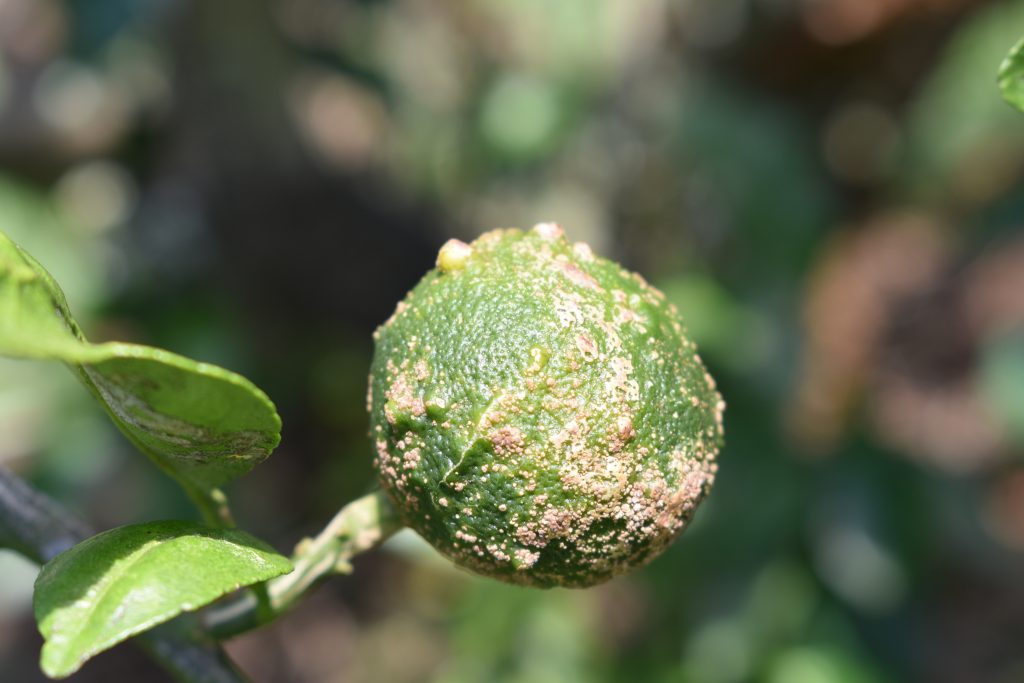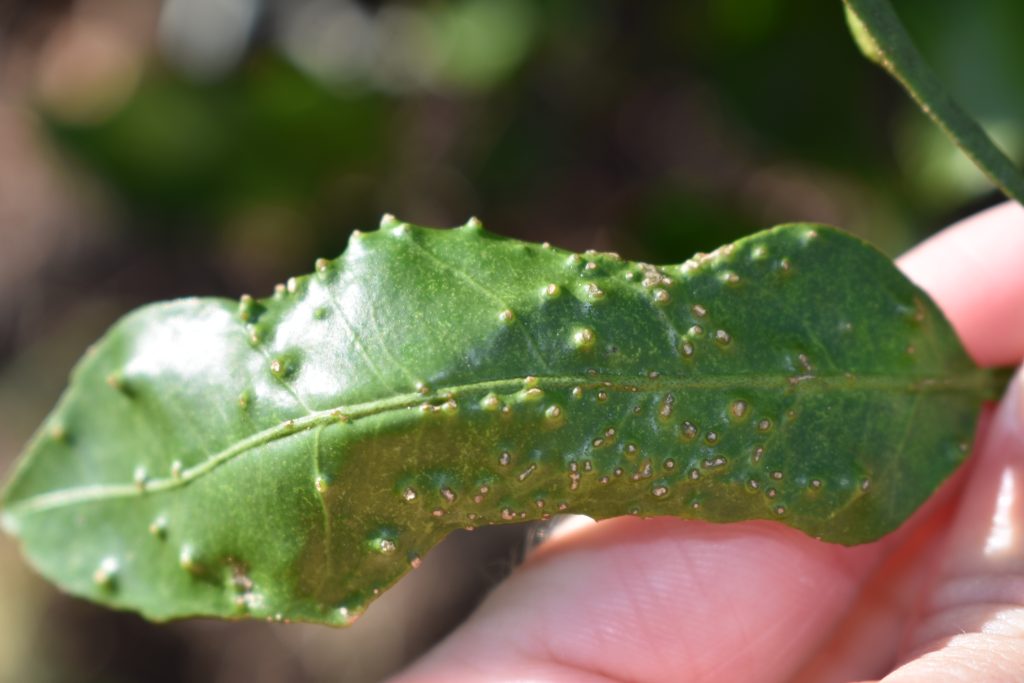Citrus scab, caused by the fungal pathogen Elsinoë fawcettii, is a common disease affecting citrus trees in the home landscape such as satsuma mandarins, tangelos, grapefruit, and other tangerine hybrids. This disease affects the leaves, fruit, and twigs of citrus trees, creating unattractive, wart-like lesions. While citrus scab is rarely fatal to the tree, it can reduce the quality and marketability of the fruit.
Identification and Symptoms
The most noticeable symptom of citrus scab is the development of corky, irregularly shaped lesions on the surfaces of leaves and fruit. These lesions start as small, pale, slightly raised areas that gradually enlarge and turn dark brown to light gray. On leaves, the lesions often appear on the lower surface, giving them a warty appearance. Fruit may exhibit scab lesions, which can cause deformities and discoloration, making them less appealing for consumption, however it does not make the fruit inedible.
Understanding the Disease Cycle
Citrus scab thrives in warm, moist conditions and is primarily spread through wind-driven rain that carries the fungal spores to new infection sites. The spores can overwinter in infected plant debris and on asymptomatic parts of the tree, leading to new infections during the growing season. Recognizing this cycle can help residents take preventative measures during critical times of the year.
Management and Control
To keep citrus scab at bay, homeowners should employ a combination of cultural practices as well as careful chemical use when necessary.
Cultural Practices
- Sanitation: Regularly remove and dispose of fallen leaves, fruit, and other plant debris to reduce the number of overwintering spores. This practice is particularly important in the fall and early spring.
- Pruning: Prune the tree to improve air circulation within the canopy. This reduces humidity levels around the foliage, making the environment less conducive to fungal growth.
- Irrigation Management: Avoid overhead irrigation. Overhead watering can splash spores onto healthy tissue, spreading the infection. Instead, water trees at the root zone or use microsprinkler irrigation.
Chemical Control:
- Fungicides: Applying fungicides can help protect new growth from infection. Copper-based fungicides are commonly used and can be effective. It is important to read and follow the product label on application timing and directions for use. Typically, fungicides for controlling scab should be applied in early spring when new growth begins.
Conclusion
Regularly inspect your citrus trees for signs of citrus scab, especially after periods of rain and humidity. Early detection and treatment are crucial to prevent widespread infection. Maintaining a healthy tree through proper fertilization, watering, and pest management can also reduce the tree’s susceptibility to diseases like citrus scab.
For more information, please visit:
HS-867/HS132: Citrus Culture in the Home Landscape (ufl.edu)
- 2025 Peanut Butter Challenge! - October 3, 2025
- Discover the Sweet Potential of Persimmons at the UF/IFAS Persimmon Field Day - August 28, 2025
- Black-eyed Susans Bring Bold Color and Easy Care - July 20, 2025


